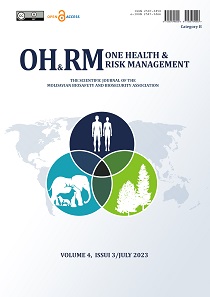Abstract
Introduction. Intrasectoral collaboration in public health represents a huge potential for optimizing the three fundamental public health actions: disease prevention, health protection and healthcare awareness. The COVID-19 pandemic has significantly impacted the engagement of the parties particularly interested in disease prevention and control.
Material and methods. A mixed qualitative and quantitative research (in-depth interviews/questionnaire survey) was carried out within this paper.
Results. Most of the respondents assessed the intrasectoral cooperation as unsatisfactory and consider that the latest reform of the Public Health Service had a negative impact on it. The pandemic alert caused by the COVID-19 infection served as a catalyst to improve cooperation. The main barriers to collaboration are considered the lack of staff and insufficient communication, various viewpoints and lack of public health knowledge, an overlying complex legal framework and lack of motivation, which often requires central authority involvement.
Conclusions. Some barriers to cooperation can be overcome without any systemic changes and centralized involvement, while more easily achievable measures such as joint training are sufficient. Thus, understanding these aspects can greatly improve the interaction between services.
|
 Views: 447|
|
Views: 447|
|
This work is licensed under a Creative Commons Attribution 4.0 International License.
Copyright (c) 2023 Alexandru CORNEI, Valentin MITA, Oleg LOZAN

